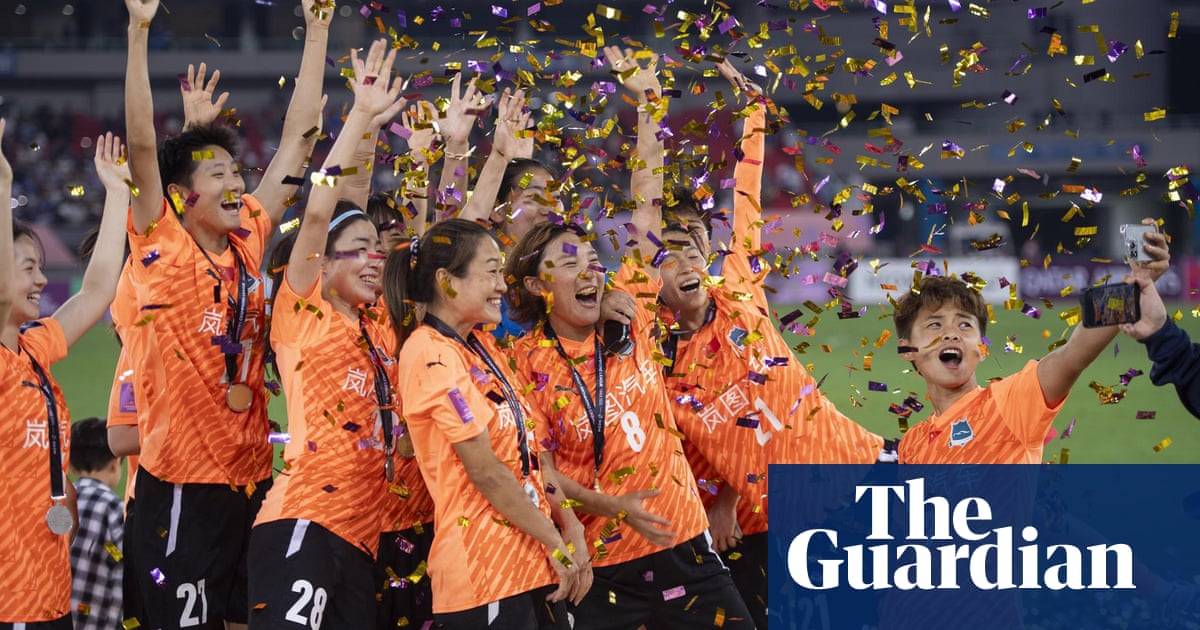Continental club competitions present opportunities like no other. A precious yet highly elusive chance to test one’s mettle against unknown opposition amid unfamiliar surroundings. For players, coaches and their respective clubs alike, this is where many believe true growth occurs.
And it wasn’tjust Lisbonthat played host to these virtues this past weekend as a new dawn for women’s football arose in Asia. The final of the inaugural AFC Women’s Champions League took place in China with host club, Wuhan Jiangda,edging out Melbourne Cityafter a nerve-racking penalty shootout following a tight, and often physical, 120 minutes of playing time with the score tied at 1-1.
The Wuhan manager, Chang Weiwei, could not have been prouder, lauding his side’s efforts after the game: “I have to thank the whole team for believing in the coaching staff and for emerging victories after a difficult journey,” the 47-year-old said.
In the opposing dugout Michael Matricciani was magnanimous in defeat: “We love football for exactly these moments, sometimes it goes your way and sometimes it doesn’t,” he said. “I think we played extremely well for 120 minutes, especially towards the end.”
The decisive save from the Wuhan goalkeeper Chen Chen sparked joyous celebrations as the hosts, who enjoyed home advantage thanks to the AFC’s decision to select their stadium as the venue for the semi-finals and final, took to the podium to lift the trophy against a backdrop of confetti and jubilant faces.
The triumph, however, is much more than just a moment of glamour and glitter because the occasion signals a new and promising era for the women’s game in Asia.
As continental champions Wuhan’s participation in next year’s Women’s Champions Cup is now confirmed. They are also expected to be assigned one of three AFC berths for theinaugural Women’s Club World Cupin 2028 that was announced by the global governing body this year. Until now, cross-confederation competitions have been in all too short supply with teams having little means of testing their strength against clubs of vastly different football cultures. Fifa’s efforts to enhance global interconnectivity will surely go some way in bridging this gap.
The prize money offered by the Asian Football Confederation for the Asian Women’s Champions League is equally significant. An eye-watering $1.3m (£960,000) was awarded to the winners, Wuhan, with each group-stage participant receiving $100,000. Incremental amounts are added to the team’s total purse as they progress through the competition until elimination.
This is at a similar level to the $1.36m Arsenal received for winning the European Champions League, so the ambition Asia’s governing body has for its shiny new women’s club football competition is clear.
Putting this into further perspective, Japan’s WE League awarded its champions, Tokyo Verdy Beleza, $140,000 this season. In the Champions League this amount would be surpassed once a team secures group-stage qualification to go into the quarter-finals with the eventual winners taking home nearly 10 times that of the champions of one of Asia’s top leagues.
However, it remains to be seen how these funds are used as it is discretional. The notion is that it is to aid the development and sustainability of women’s football at local level, but there is seemingly no framework in place to ensure the trickle-down effect runs its course.
As a spectacle the event went some way in serving as a showcase tournament for women’s club football in Asia. A record crowd of 18,715 attended the final with 4,977 out for the host club’s semi against Ho Chi Minh City. The non-centralised quarter-finals also saw 3,243 fans turn out at the Kumagaya Athletic Stadium, just north of Tokyo, as Urawa Reds Ladies also fell victim to Wuhan’s penalty kick prowess. Naturally the numbers are not as impressive at the start of the tournament but overall they do stack up respectably when compared with other continental competitions.
Meanwhile, the present reality of women’s football on the Asian continent must be viewed with a balanced lens. The majority of domestic competitions fall into the category of what many would class as “developing leagues” with issues such as player welfare and commercial viability paling in comparison to the top leagues of Europe and North America.
Sign up toMoving the Goalposts
No topic is too small or too big for us to cover as we deliver a twice-weekly roundup of the wonderful world of women’s football
after newsletter promotion
The latest Fifawomen’s football benchmarking reportfinds that benefits such as financial compensation and pregnancy support are little to nonexistent while commercial items such as match broadcasting and the offering of season tickets take an equally primitive form. All this is to say that this competition should be considered a first, but notably progressive, step on a long road towards greater things.
But for now the AFC’s efforts are to be commended. The commitment shown, both financial and otherwise, appear to be of a chicken-before-egg nature as it makes the necessary investments to enable a prosperous and sustainable future.
If you have any questions or comments about any of our newsletters please emailmoving.goalposts@theguardian.com.
This is an extract from our free weekly email, Moving the Goalposts. To get the full edition,visit this page and follow the instructions. Moving the Goalposts is back in to its twice-weekly format, delivered to your inboxes every Tuesday and Thursday.
